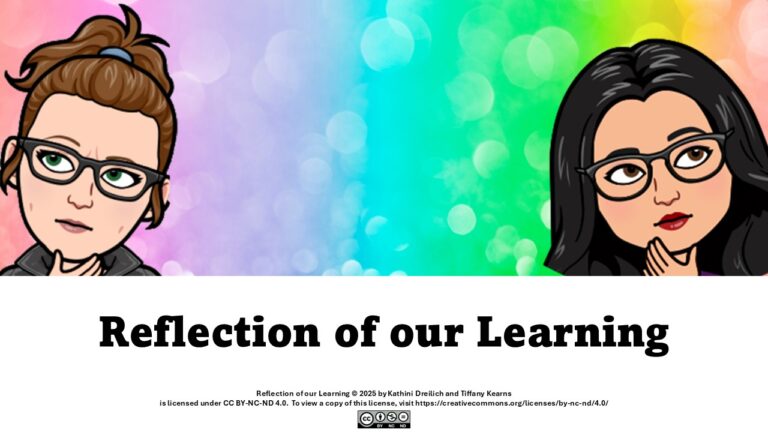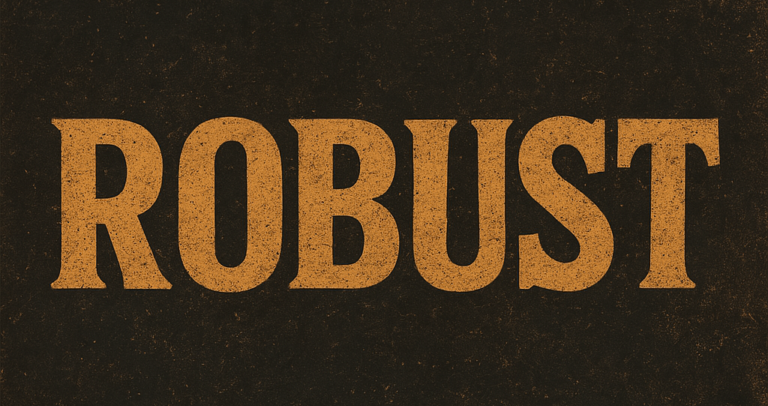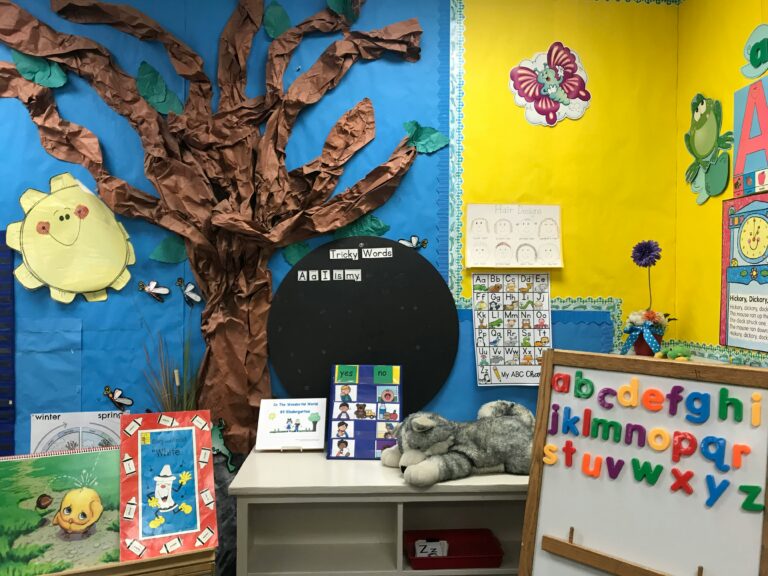Mirrors and Margins
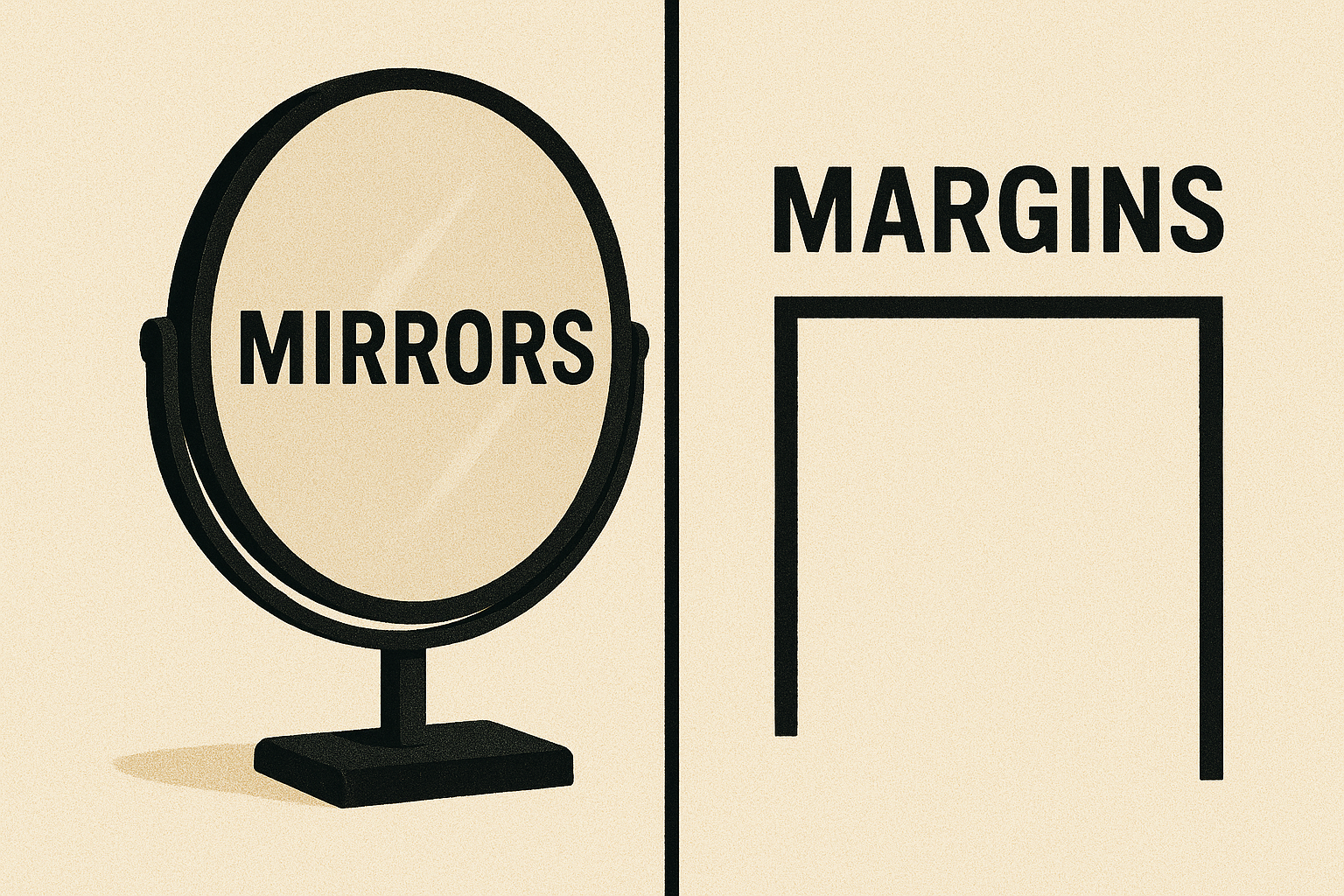
Featured image by CoPilot
Tiffany’s Reflection on Learning New Technology
Lost in Translation
As I tried to get better at using transitions in PowerPoint to maximize what I have learned from the CTML Principles, and then the different H5P content types, I realized that the frustration I felt mirrors what my newcomer EAL students feel every day as they struggle to learn the language.
Students often tell me that they know so clearly in their heads what they want to say but, they just don’t have the skills and knowledge of the language to execute it. Similarly, I found myself trying again and again to figure out exactly how to set up my ppt transitions to communicate what I wanted in a way that would draw attention to key points (Signaling Principle) while at the same time making sure the text was close to the image it was describing (Temporal Contiguity Principle) and also breaking the slides and videos into manageable bite-sized lengths (Segmenting Principle). I knew how I wanted everything to look but struggled to make it happen.
Trial and Error
When learning a new language, students need to experiment, continue trying when they are not understood, make mistakes and mispronounce, and at times accept defeat for the moment – returning later to try again. I’ll never forget a time in my Japanese learning adventure when I used the word muscle (kin-niku) to try to describe garlic (nin-niku). The expression on my father-in-law’s face was priceless!
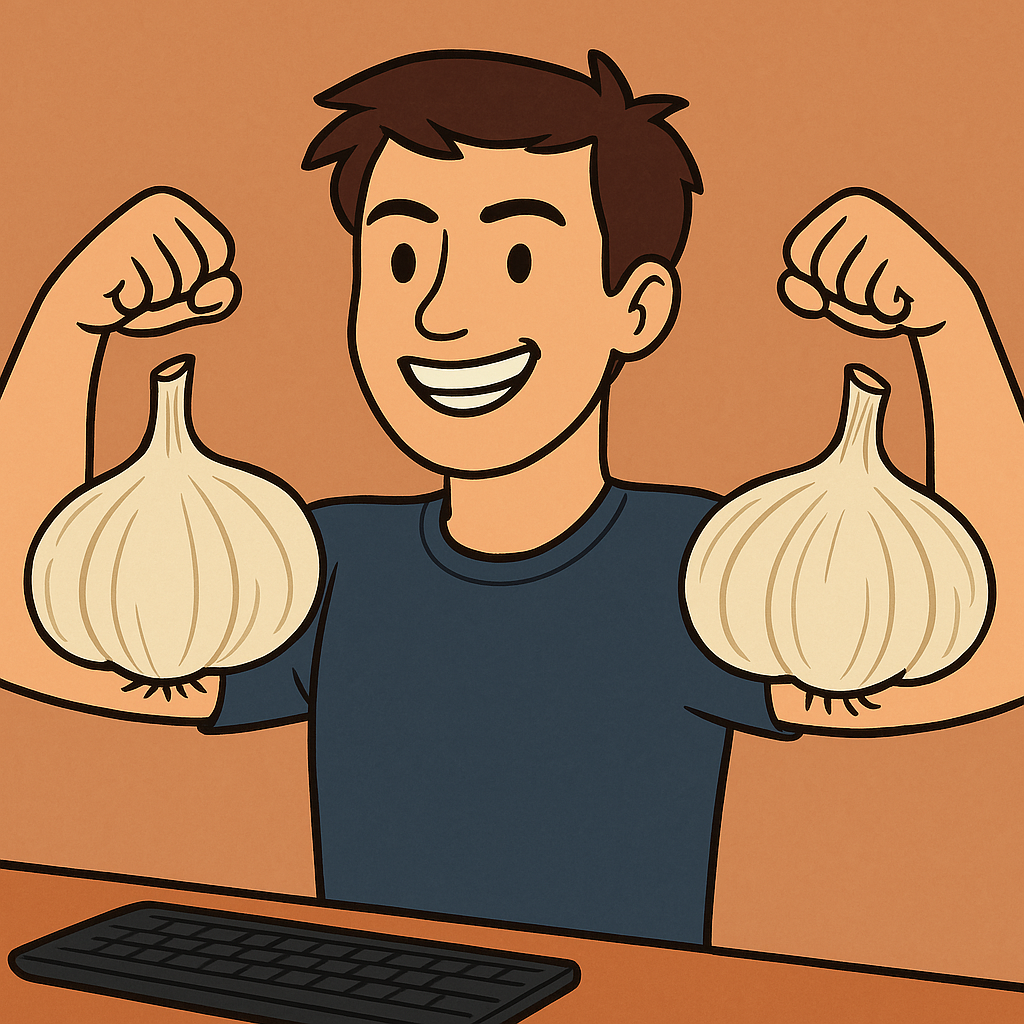
I gave those biceps a bulbous twist—they’re bursting with garlicky power.
CoPilot
In a similar manner to language learning mishaps, I had to fail and mis-click many times with PowerPoint and H5P. In particular the Drag and Drop H5P activity is not intuitive at all for me and seems to work in reverse to what makes sense in my brain. Luckily, I had Kati to help translate for me!
Learning Curve
As with language, over time and a lot of practice, I built up more confidence. I slowly learned how to use the tools and think more in their logic. Little by little I began speaking their language. And this adjustment is still in process.
Treviranus, a key researcher of inclusive design, says that our skills are variable and evolving – at any point in our lives anyone can find themselves at the margins (2018a, p.2). Learning the various tech tools it took to create our website was a journey of ups and downs. I found myself very much at the margins many times, struggling to make my way inward where surely more understanding and clarity would be. The process has reminded that learning isn’t a straight line to a goal, but rather a swirling, curling, ever-changing path requiring navigation, perseverance, and patience.
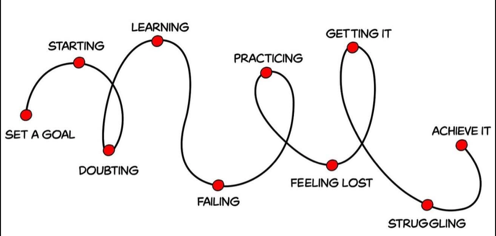
References
Mayer, R. E. (2021). Cognitive Theory of Multimedia Learning. In The Cambridge Handbook of Multimedia Learning (3rd ed., pp. 57–72). Cambridge University Press. https://doi.org/10.1017/9781108894333.008
Treviranus, J. (2018a). Learning differences & digital equity in the classroom. In International Handbook of Information Technology in Primary and Secondary Education 2nd Edition. Springer. http://openresearch.ocadu.ca/id/eprint/2152/
Mirrors and Margins © 2025 by Tiffany Kearns is licensed under CC BY-NC-ND 4.0


